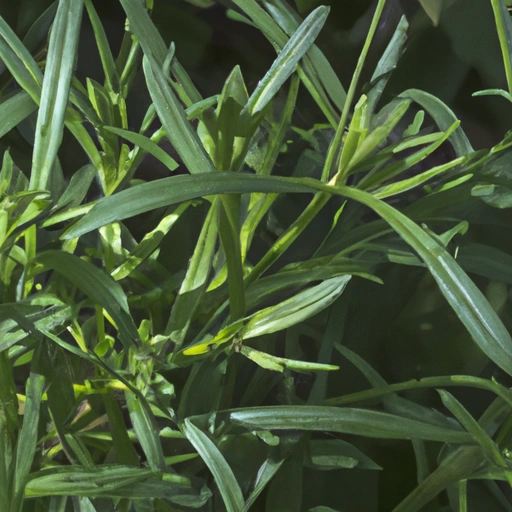Tarragon
Description

Tarragon, also known as Artemisia dracunculus, is a perennial herb in the sunflower family. It's a versatile ingredient that brings a distinctive, slightly bittersweet flavor with hints of anise or licorice to a variety of dishes. Tarragon leaves are slender, glossy, and taper to a point, and they can be used fresh or dried in culinary applications. In recipes, tarragon is often measured in teaspoons (tsp) or tablespoons (tbsp) in American units, and in milliliters (ml) or grams (g) in European units, sometimes referred to as 'azjan' in certain regions.
Common uses
Tarragon is commonly used to flavor a wide range of foods including sauces, dressings, pickles, and vinegar. It is also a key component in the preparation of mustards and butters, and is often used to season chicken, fish, and egg dishes.
Nutritional value
Calories
A 2-gram serving of fresh tarragon leaves contains approximately 1 calorie (kcal).
Protein
Tarragon provides a modest 0.12 grams of protein per 2-gram serving.
Fat
This herb contains a negligible amount of fat, with only 0.04 grams per 2-gram serving.
Carbohydrates
There are about 0.24 grams of carbohydrates in a 2-gram serving of tarragon.
Vitamins
Tarragon is rich in vitamin C and also has small amounts of vitamins A and B6.
Minerals
The herb contains trace amounts of minerals such as potassium, magnesium, calcium, and iron.
Health benefits
Tarragon is known for its potential digestive benefits, and it may help to stimulate appetite and relieve digestive discomfort. Additionally, it is thought to have diuretic and menstrual-regulating properties and contains antioxidants that can help protect against free radical damage.
Potential risks
While tarragon is generally considered safe for culinary use, excessive consumption may lead to potential risks. It contains a compound called estragole, which in high doses could potentially be carcinogenic. Individuals with allergies to other members of the Asteraceae family should also exercise caution.
Common recipes
Tarragon is a key ingredient in French cuisine, especially in Béarnaise sauce, and it's also used in various soups, stews, and marinades.
Cooking methods
The herb can be used fresh or dried, and is often added towards the end of cooking to preserve its delicate flavor.
Pairing with other ingredients
Tarragon pairs well with poultry, seafood, eggs, and a wide array of vegetables. It also complements the flavors of citrus, mustard, and various cheeses.
Summary
Tarragon is an aromatic herb with a rich history and distinct flavor that enhances a variety of dishes. Whether used fresh or dried, tarragon's licorice-like taste is a favorite in many kitchens around the world. Its nutritional profile offers a host of vitamins and minerals with minimal calories, making it a healthy addition to meals. However, it should be consumed in moderation to avoid any potential risks associated with its estragole content.